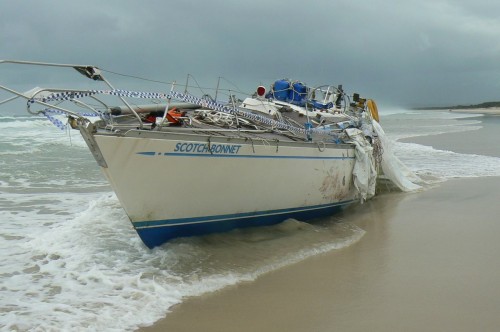Do you want to be informed on new Posts on this Thread? (members only)
| S&S Swan General - Swan 41 Tasman crossing |
|---|
|
Join Date: 01 January 2011
Posts: 36 |
||
|---|---|---|
|
Swan 41 Tasman crossing  |
|
Join Date: 05 February 2007
Posts: 102 |
||
|---|---|---|
|
Thank you for sharing this unbelievably positive adventure Andrew. They always say if you brought everyone home safely, you did everything right...and the fact that Scotch Bonnet is back in your lives is just proof of that! Will look forward to hearing about her progress, as I'm sure we all will here on the forum. |
|
Join Date: 10 April 2010
Posts: 32 |
||
|---|---|---|
|
What an amazing story. And yes, how wonderful that you will be able to restore Scotch Bonnet. I hope the restoration goes as smoothly as possible. Just retrieving her from the beach must have been quite a feat. Hearing such a story, one can't help but wonder about the other story lines that could have unfolded. For example, do you think that deploying a drogue, such as the Jordan series drogue, would have enabled you to weather the waves and wind, even with the rig gone? Also, it would be interesting to hear others weigh in on the cause of the dismasting. Given the conditions you were under, should the backstay have been able to support a storm jib without any trysail to balance the forces on the rig? In other words, are the forces so extreme under jib only in high wind conditions that even the best backstay would be strained to the point of breaking? Or would excellent quality rod rigging stand up to such a strain? Of course, bottom line is that all crew are safe and you have the boat back. Cheers, Kim and Mark Anthea, 1977 Swan 41 |
|
Join Date: 01 January 2011
Posts: 36 |
||
|---|---|---|
|
Dear All, to fill in some blanks. I spoke with the riggers in NZ shortly after getting home and explained that it was both backstay insulators that failed with a clean break through each (that has been the subject of a lot of discussion how both could fail at the same time). I explained the conditions and what we were doing and they estimated that there would have been no more than 5000kg load on the backstay. The insulators were designed to have a breaking strain of 9000kg+ which is greater than the 10mm wire at 8700kg so in theory the wire should fail first. The riggers over the next few days tested an insulator to destruction and it failed at 4700kg. It would have been a more difficult case to prove until Scotch Bonnet arrived home with the bottom section of the backstay with half an insulator still attached. Our insurers are continuing to pursue recovery and I hope it results in a product recall.
|
|
Join Date: 24 April 2009
Posts: 36 |
||
|---|---|---|
|
I had followed the story on the internet and am very happy that it appears you are heading toward a happy ending. Best of luck with the restoration! |
|
Join Date: 24 April 2009
Posts: 36 |
||
|---|---|---|
|
I had followed the story on the internet and am very happy that it appears you are heading toward a happy ending. Best of luck with the restoration! |
|
Join Date: 15 April 2011
Posts: 393 |
||
|---|---|---|
|
Dear Andrew, Glad to hear that things are looking up for you! Losing a boat in a hurricane must be a terrifying experience. Great video. It's still hard to believe that the trucks could actually pick up your ship! Incredible. Fair Winds Chris Mabel's Casse Tete 43/003 |
|
Join Date: 02 February 2007
Posts: 202 |
||
|---|---|---|
|
Dear Andrew, what an extraordinary story you are telling us, and what a pity that after all the work you have been putting into your boat the rig did let you down. How frustrating it must have been...
|
- Threads : 1702
- Posts : 10217
- Members: 820
- Online Members: 0

